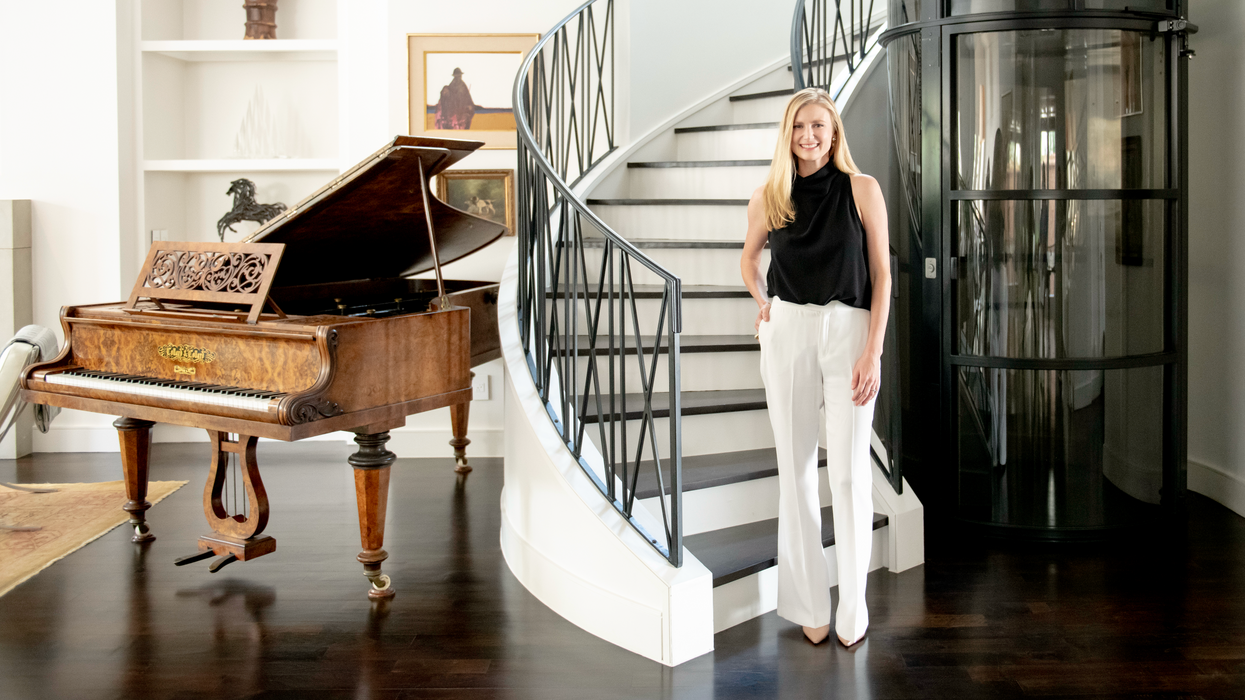Drawing Conclusions
In beautiful new books, architecture firms tout different visions for a fast-changing Houston — living in classic style, and working with modern vitality.

There are few things in life more gratifying than owning an impressive, well-curated collection of glossy coffee-table books. But as any proper coffee-table book connoisseur knows, owning a large collection means you have to make frequent, challenging curatorial decisions of your own as to which books in your collection get top-stack status. Does the Dior top Chanel, or does Annie Leibovitz go below Helmut Newton? Well, it might be best to just go local! There are two new coffee-table books from disparate Houston architecture firms, each promoting their respective contributions to the city. And they both deserve top-stack status — just on different stacks.
For nearly 40 years, consultancy and creative design firm PDR has been at the forefront of the field of workspace design. PDR’s new book Collisions (amazon.com, $60) chronicles some of the local firm’s most impressive recent design feats, while also laying out in poetic prose the science behind its progressive, in-demand approach. The days of gray cubicle labyrinths, migraine-inducing fluorescent lighting and strict workplace hierarchies have run their course, and the folks at PDR seem ready to help direct Houstonians into a new era of egalitarian workplace pleasantness.
The secret to innovation, says PDR President Lauri Goodman Lampson, is to create a compelling workplace environment that facilitates the serendipitous colliding, interaction and collaboration of employees. “We’re in a transformative period right now in work, where almost everything we know is shifting from this idea of hierarchy and isolation,” says Lampson, “and the focus now is on getting people together across all hierarchies, disciplines and departments. We’ve flattened the hierarchy, and now it’s all about transparency and the ability to interact and to integrate.”
In order for organizations to figure out how to thrive in today’s ever-changing, fast-paced, technological world, Lampson says people need workplace environments that create opportunities for them to communicate openly and share ideas. PDR facilitates theses environments by focusing on three essential components: connection to nature, collegiality and urbanness, which they define as the density of human energy.
The firm says that all of these essential components were included in the work it did for the new 385-acre ExxonMobil campus, just one of PDR’s projects chronicled in gorgeous photos in Collisions. In addition to managing the site selection for the mammoth project, the firm also created the sprawling complex’s initial master plan and helped bring together more than 900 architects and engineers from an assortment of top-tier design firms to work on the project.
On the other end of Houston’s vast architecture world, Curtis & Windham Architects has made a name for itself by adhering to a time-honored classical approach. The firm’s beautiful new book, A Vision of Place (amazon.com, $50) touts its role in creating timelessly elegant and refined residences, as well as institutional buildings. Founded by Texas natives William Curtis and Russel Windham in 1992, Curtis & William designs stately mansions in elite Houston enclaves like River Oaks and West U; picture-perfect ranch and resort homes in places like Montana, Colorado, New Mexico and Florida; and sprawling country houses throughout Texas that are so Old World you’ll forget they were built in the New World.
“The classical style is based in good, sound principles,” observes Curtis. “Classical buildings last because they work. It’s based in beauty. It’s based in good proportions.”
Curtis’s partner Windham is also a believer. “Architecture is far too serious, and it affects far too many people, for architects to be experimental,” he says. “I think traditional architecture with a classical bent is the most responsible and endearing thing to build.”
Curtis & Windham specializes in residential architecture, interior design and landscape design, and the firm’s expertise in all three fields is on full display in page-turning fashion in A Vision of Place. Their Inverness House makes an appearance. It’s quite a beautiful residence — inspired by Versailles’ Pavillon de la Lanterne, an elegant two-story manor house designed by Louis Le Vau in a u-shape — built in Houston in 2012. Also pictured are some of Curtis & Windham’s civic projects, such as a stately dining hall recently designed for Houston’s St. John’s School, and an airy Catholic church built in Jefferson, Texas.
Curtis and Windham say they base their designs around benchmarks of appropriateness, proportion and scale, also citing the Beaux-Arts style as influential, not just in particular shapes and lines, but also in developing working methods. The neoclassical Parisian approach emphasizes quick conceptual sketches and refined presentation drawings.
In a city like Houston, not often cited as a proponent of history and classicism, why such a devotion to the cause? Says Windham: “Because that’s the right way to do things.”





